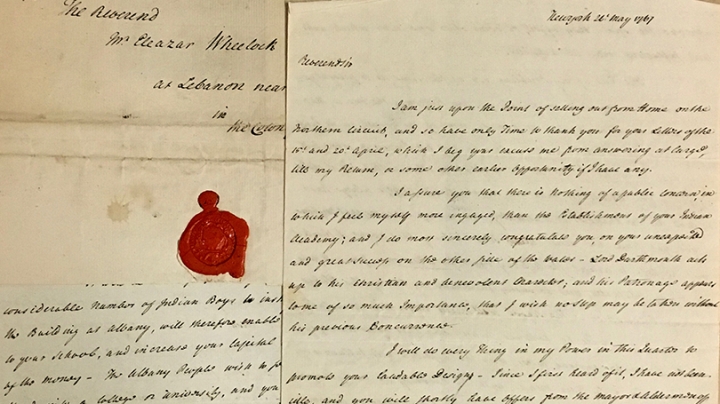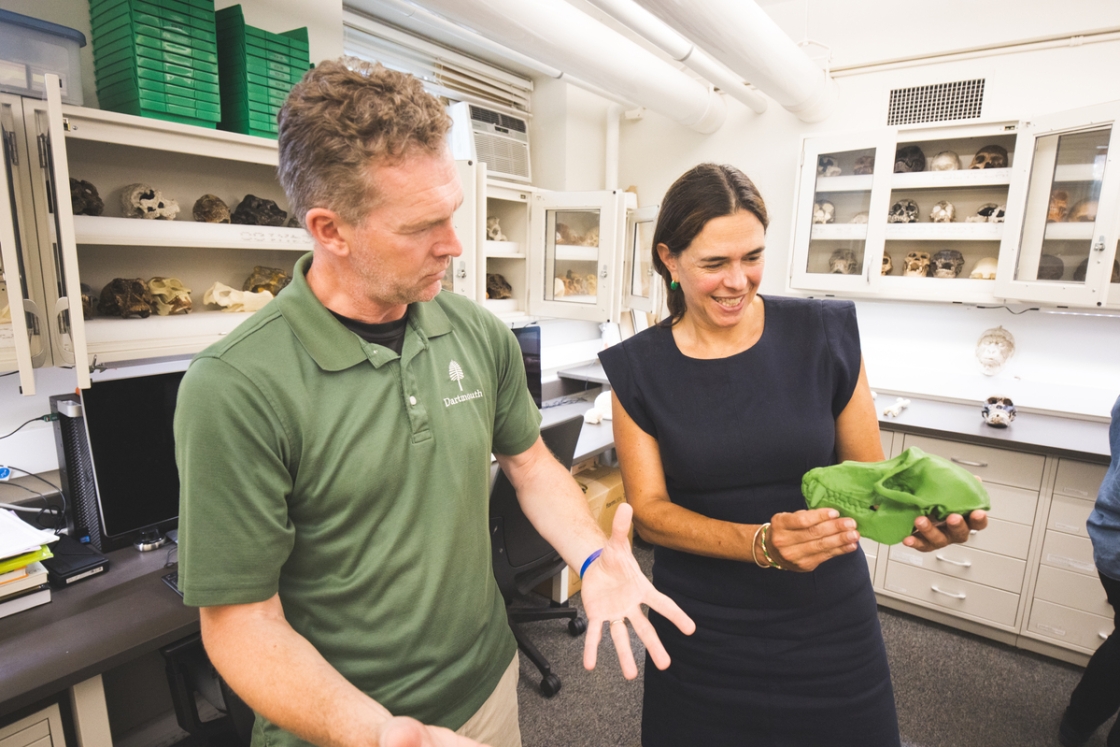Read the full blog post, published by Rauner Special Collections Library.
On this day 248 years ago, Dartmouth College was officially chartered. But how did a charity school housed in a poor minister’s house grow into something so grand as a college?
The story begins in the winter of 1766 when Eleazar Wheelock sent Samson Occom and Nathaniel Whitaker to Great Britain to raise funds for Moor’s Indian Charity School. In their absence, Wheelock was in Connecticut attempting to get a charter for the school to improve its legal standing.
At first, Wheelock was stymied because the colony of Connecticut was itself incorporated. Under English law at the time, one corporation could not charter another. Because of this, Wheelock began to look further afield. He considered sites in New York, Massachusetts, and New Hampshire. The officials from all of these colonies were more than interested in hosting Wheelock’s school and they plied him with offers of money, land, and prestigious positions.
In 1767, William Smith, a prominent New York lawyer and a member of the Governor’s Council, wrote to Wheelock in an attempt to persuade him to locate his school in Albany. In his letter, he mentions that the people there will give £2,300 and would be pleased to see the school made into a university or college, with Wheelock at its head. This appears to be the first mention of the possibility of the school becoming a college.
Wheelock turned this offer down because his relationship with the Six Nations of the Iroquois Confederacy had soured, and he could not anticipate many Indian students coming to the school from the Albany area. But one has to wonder if this did not alter his aspirations.
The next prominent offer came from Massachusetts in 1768. In his letter to Wheelock, Timothy Woodbridge suggested that the Governor of Massachusetts would be interested in making the school a college. In his response, Wheelock noted his reasons against locating the school in Massachusetts—chief among them is that there was already a good college in the colony. This appears to be first time there is an indication from Wheelock that he had ambitions to make his school into something greater.
Wheelock, always a bit of a wheeler-dealer, had been corresponding with the newly appointed Governor of New Hampshire, John Wentworth, throughout his negotiations with the other colonies. Wentworth was as anxious as any to locate an institution of higher learning within his colony. When Wheelock first proposed using the term “college” in a draft of the charter in 1769, Wentworth did not balk. He readily added the wording to the Royal Charter he granted for the founding of Dartmouth College in December of 1769.


